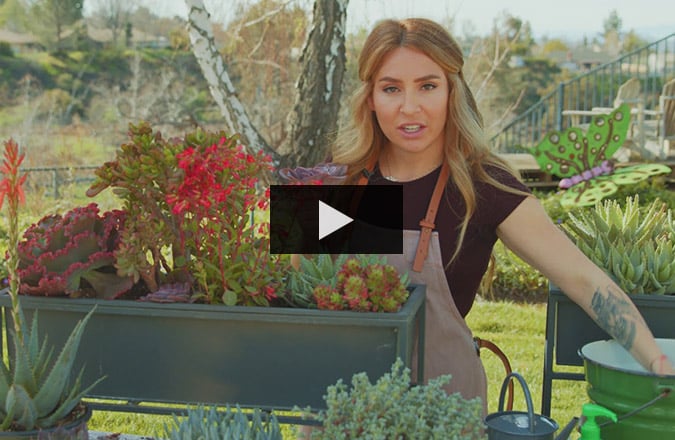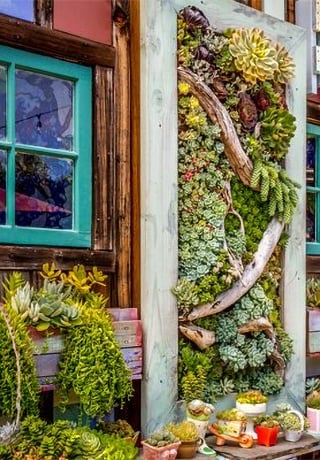Planting Succulents: 8 Tips for Growing Succulents in Your Garden
Learn the do's and don’ts of planting and growing succulents and get design ideas for incorporating them into your gardenSucculents are an exotic and eye-catching way to beautify your garden, whether used to create a colorful rock garden, a dramatic container arrangement, or even a work of art to hang on an outdoor wall. Succulents are also tough and resilient, preferring neglect rather than constant attention.
Another plus: You don’t need a green thumb to grow succulents successfully. By recreating growing conditions similar to their native habitats, your succulents will flourish and even propagate on their own with minimal interference. Here are eight tips from expert Tom Jesch at Waterwise Botanicals for getting your succulent garden off to a good start.
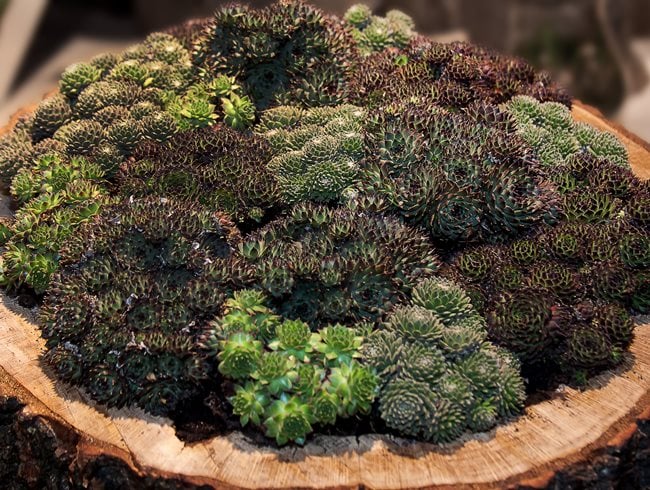
Sempervivum, a type of succulent that tolerates below zero temperatures, is planted densely in a repurposed tree stump.
1. Protect succulents from extreme temperatures
If you plan to grow your succulents outdoors, be aware that only a few varieties can withstand below-freezing conditions. And although most succulents like sun and heat, some desert environments can be too extreme. “There are exceptions,” says Jesch. “Sedums and sempervivums (alpine species) can tolerate below-zero cold. And succulents such as agaves, some aloes, and most cacti can tolerate high desert heat conditions.”
For mild climates, there are a number of reliable succulents that can tolerate outdoor conditions year-round. Jesch recommends planting hens and chicks Echeveria ‘Sahara’, Agave ‘Moonshine’, Crassula ‘Ripple Jade’ and Crassula ‘Hobbit Jade’, many types of Elephant’s Food (Portulacaria afra), and Aeonium ‘Plum Petals’
2. Don’t give them too much sun
Many novice succulent growers assume that the sunniest location in the garden is the best site for their plants, but not all succulents like to bask in the sun all day. “The preferences are extremely variable among the thousands of varieties of succulents. Some like shade, some filtered light, some sun, and some blasting sun. As a generalization, most like at least two to three hours of sun or filtered sun a day,” says Jesch.
When growing succulents indoors, place them by a window or in a garden room where full sun is available for at least two or three hours a day. If a sunny window isn’t available, you can also overwinter your succulents under grow lights. “When they can enjoy outdoor conditions again, bring your plants outside gradually to let them acclimate to avoid sunburn.” says Jesch.
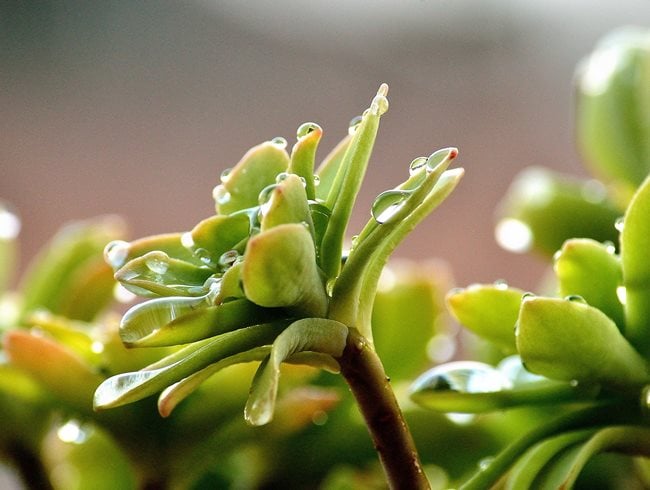
The condition of a succulents leaves is the best indicator of whether it is getting enough water.
3. Succulents (even cacti) like water
Contrary to common belief, you won’t kill your succulents by watering them regularly, especially during the active growing season. The key is to wait for the soil to become dry between waterings so that the roots can breathe. “Depending on weather, time of year, pot size, and soil conditions in the garden, this can be as often as every several days to as little as every two to three weeks during cool or low-light seasons. I’ve seen many succulents go for several months without water and still survive,” says Jesch.
So how do you know if your succulents are getting the right amount of water? The condition of their leaves is the best indicator. If your succulents are thirsty, the leaves will look shriveled and lackluster with no shine. The signs of overwatering include stem or root-rot and mushy or yellowing leaves.
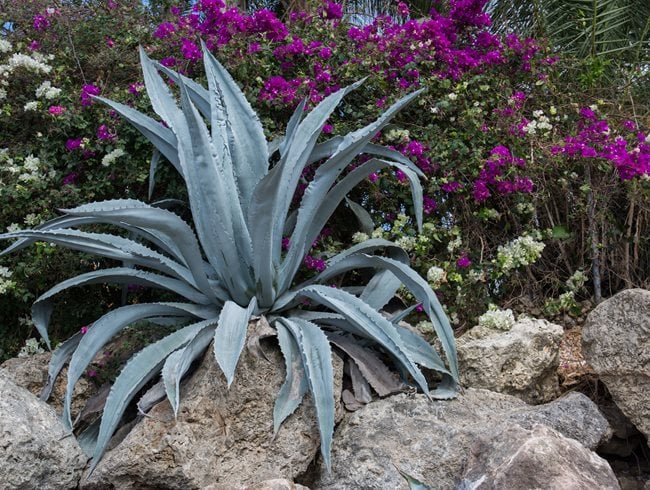
Succulents grow best when given excellent drainage, which can be achieved by adding sand or pumice to your soil.
4. Give them the right mix of soil and sand
Succulents don’t like to have their roots sitting in wet soil, so it’s important to add sand or pumice to your soil mix to improve drainage. Other nonorganic materials that will help to loosen the soil include perlite, small gravel, crushed granite, or Turface (a calcined clay product).
“We like to use volcanic sands (pumice and scoria) to keep the soil from being too heavy, but regular sand is OK also. Most commercial mixes lack sufficient sand component because of shipping weight issues. About 60% nonorganic and 40% organic material is what provides good drainage and permanence,” says Jesch.
5. Don’t backfill after planting
When planting succulents in the garden, dig a hole the size of the root ball and drop the succulent in. “Then walk away from the plant! Don’t backfill or tuck the soil back in around the roots,” Jesch stresses.
Leaving this air gap allows the soil to slowly work its way back in around the roots at the same growth rate as the plant. This promotes the growth of new roots near the soil surface, where they can breathe. (Watch this video of Jesch demonstrating the right way to plant succulents outdoors.)
Most succulents don’t like a lot of organic material mixed or tilled into the soil near their roots because it can retain too much moisture. “If you apply mulch, avoid mounding it near the crown or base of succulents. Taper down or pull away a bit so it’s not sitting on or collaring the plant up close and deep,” Jesch advises. Even better, apply a nonorganic mulch such as crushed rock, granite, or decorative stone. These mulches will allow the soil to dry out while keeping the soil cool and preventing erosion.
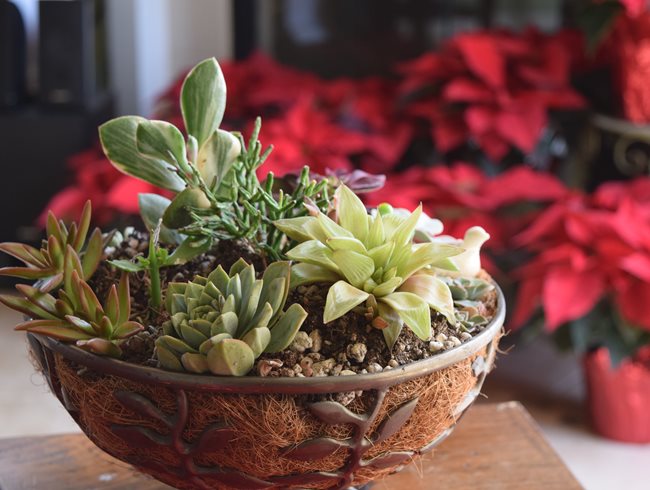
Succulents planted in pots can be brought indoors for protection from winter cold.
6. Put them in pots
If you can’t grow succulents outdoors year-round, the best solution is to plant them in pots or other containers, so you can easily move them indoors or to a sheltered area when weather conditions change. Succulents that will thrive on a sunny windowsill include Haworthia, Gasteria, crown of thorns (Euphorbia millii), Easter lily cactus (Echinopsis), Sanseveria, and Christmas cactus (Zygocactus).
“When planting in pots, it’s not so critical to leave that air gap, as long as the pot drains well and you don’t plant them too deeply,” says Jesch. As with in-ground planting, the use of a quick-draining soil mix is important. You can improve the drainage of an ordinary potting soil mix by amending it with coarse sand or gravel.
After potting succulents, Jesch recommends waiting two or three days before watering them thoroughly. This will give the roots time to recover before they soak up water and help prevent root rot. “It’s also important to have enough drainage holes in the container to allow the water to drain through, wash out salts, and exchange oxygen,” he says.
7. Don’t be afraid to prune
Never be reluctant to prune or shape succulents if they become unruly, especially when several plants are grouped together. This will help keep one variety from overpowering another.
“Tipping, clipping, branch removal, and dividing are all acceptable. After pruning, you can replant the cuttings or give them to friends,” says Jesch. Before planting, allow the cuttings to dry and heal over at the wound for several days to prevent them from absorbing too much water.
Also regularly remove any dry or dead leaves at the base and perimeter of the plant. Succulents naturally lose these lower and outer leaves as they grow and mature. Removing the shriveled foliage will not only improve the appearance of your plants, it will also encourage new growth and promote air circulation.
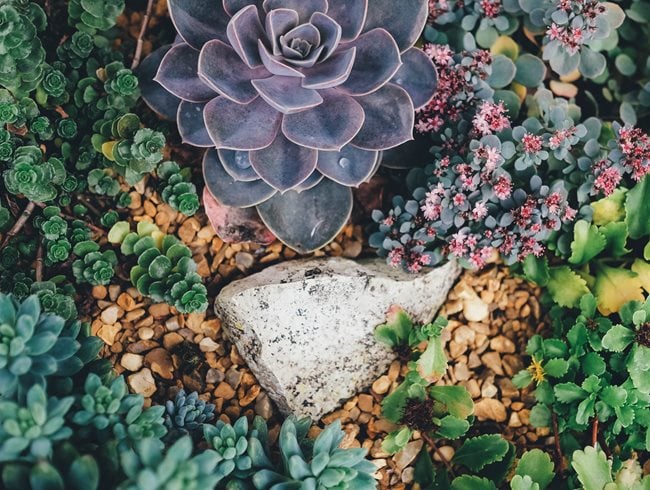
Succulents of different colors and shapes come together to create a living tapestry.
8. Keep them well-fed
All succulents and cacti need regular fertilizing because they don’t have extensive, deep root systems to seek out nutrient sources. “Without adequate fertilizer, succulents will yellow, stop growing, and lose their beautiful luster and foliage colors that we love them for,” says Jesch.
He recommends applying an all-purpose 15-15-15 fertilizer within a couple of weeks after planting succulents in the garden and then reapplying two or three times a year. For potted succulent plants, apply a general-purpose houseplant fertilizer monthly.
Five Trendy Ideas for Using Succulents in the Garden
- Create a succulent tapestry by planting them closely together according to a design template. Use plants of different colors and shapes as your embroidery materials, interweaving them to produce a living work of art.
- Recreate the exotic world of life below the sea by planting an arrangement of succulents that look like undersea creatures or plants. For ideas, see these “seascape” plant selections from Waterwise Botanicals.
- As an alternative to a traditional rock garden, grow succulents in crevices in natural stone or stone-look containers so they appear to be emerging from a rocky outcropping.
- Living walls and vertical gardens made of succulents are a high-impact way to display an array of succulent colors, shapes, contrasts, and textures. See how a living succulent wall was created in a small Northern California backyard.
- Create a succulent letter garden by planting succulents in letter-shaped frames made of old pallet or fence wood. Use your first or last initials or spell out entire words and phrases. Just remember that curved letters will be more difficult to form than straight-sided letters (Resource: DIY Succulents, by Tawni Daigle.).
GROWING SUCCULENTS IN CONTAINERS:
Succulents are a great way to dress up a patio or porch. See how to replant and clean up existing succulent container displays.
For more videos, subscribe to the Garden Design channel on YouTube!
Related reading:
Succulent Plant Care
Q&A with the Succulent Guy
